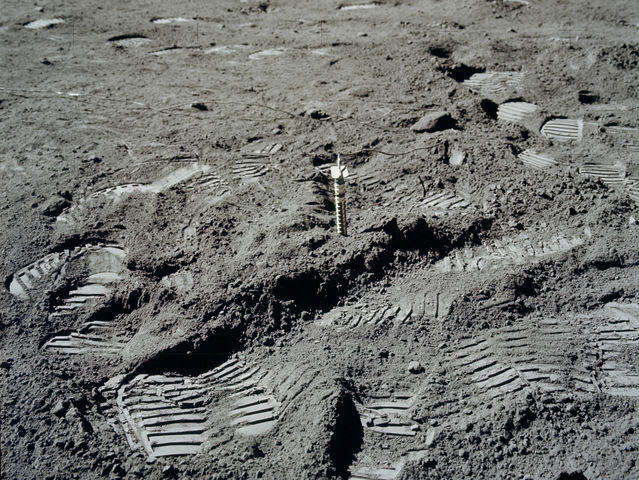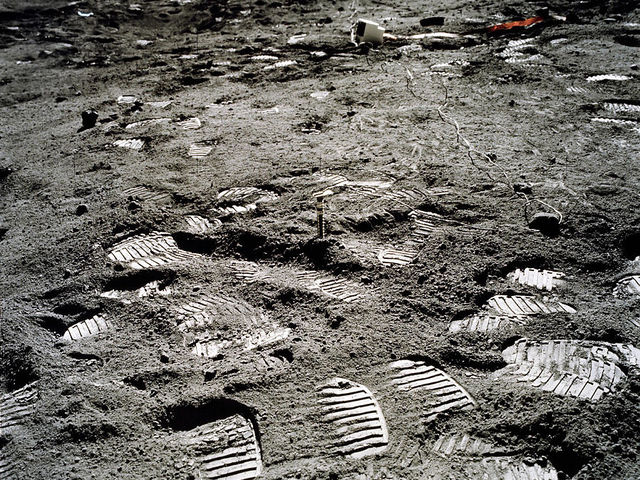Footprints and tyre tracks left behind by astronauts on the moon will stay there forever as there is no wind to blow them away

Footprints and Tyre Tracks Left by Astronauts on the Moon: A Permanent Legacy
Introduction
The moon has always held a special place in our imaginations, captivating us with its mysterious beauty and celestial allure. As humanity took its first steps on the lunar surface during the Apollo missions, it left behind an indelible mark that would forever remain untouched. This fact explores the intriguing notion that the footprints and tyre tracks left by astronauts on the moon will endure indefinitely due to the absence of wind. Let us delve deeper into this fascinating aspect of lunar exploration.
The Eternal Impact of Astronaut Footprints and Tyre Tracks
The moon’s surface is unlike anything we encounter on Earth. Its terrain consists of fine regolith, which is essentially a layer of loose, fragmented materials such as dust, small rocks, and debris. When astronauts set foot on the moon, they left deep imprints in the regolith that were unprecedented in their permanence.
On Earth, geological processes like wind erosion, rain, and tectonic movement gradually reshape our landscapes, erasing any evidence of human presence over time. However, the moon’s environment is devoid of such processes. It lacks an atmosphere, rendering it incapable of sustaining weather phenomena like wind, rain, and erosion. Consequently, any marks made by astronauts, including their footprints and tyre tracks, will remain completely intact.
Enduring Testaments to Human Exploration
The unyielding nature of the moon’s surface has transformed it into a timeless museum of human achievement. As the years roll by, those iconic footprints and tyre tracks serve as a poignant reminder of our species’ audacity and determination to venture beyond the confines of our planet. They are an enduring testament to the triumph of exploration and the courage of those who embarked on the extraordinary journey to the moon.
The Weight of Exceptional Discoveries
The footprints left by astronauts not only symbolize human ingenuity, but they have also significantly contributed to scientific understanding and research. By analyzing these impressions, scientists can gain valuable insights into the moon’s geological processes, such as the behavior of lunar dust and the potential for seismic activity. The study of these imprints allows us to unlock the secrets of the moon’s history and expand our knowledge of celestial bodies.
Moreover, the tyre tracks created by the lunar rovers used during the Apollo missions offer invaluable data on the mechanical properties of the moon’s surface. This information assists in designing future vehicles that may navigate the challenging terrains of other celestial bodies, enabling mankind to explore even further into the cosmos.
A Challenging Future
As we set our sights on future lunar missions and the establishment of a sustainable human presence on the moon, it is essential to preserve the historical significance and scientific value of the footprints and tyre tracks left behind by our predecessors. The need to protect these precious relics of human exploration becomes imperative in order to ensure their longevity and safeguard their invaluable contribution to our understanding of the moon.


Footprints Image Source: Playbuzz Tyre Tracks Image Source: Playbuzz
Tags
Share
Related Posts
Quick Links
Legal Stuff

